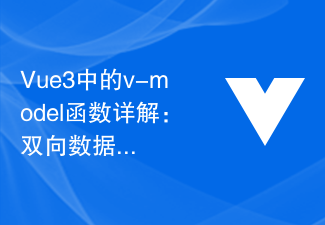
I hope you start to realize that Ember.js is a powerful but opinionated framework. We've only scratched the surface of it; there's a lot more to learn before we can build something truly useful! We will continue to use the Ember starter kit. In this part of the series, we'll review how to access and manage data in Ember.
Use data
In the previous article, we used a set of static color names defined in the controller:
App.IndexRoute = Ember.Route.extend({
setupController: function(controller) {
controller.set('content', ['red', 'yellow', 'blue']);
}
});
This allows the controller to expose data to the index template. This is cute for demos, but in real life our data source wouldn't be a hardcoded array.
This is where models come in. A model is an object representation of data used by an application. It can be a simple array or data dynamically retrieved from a RESTful JSON API. The data itself is accessed by referencing the model's properties. So if we look at the result like this:
{
"login": "rey",
"id": 1,
"age": 45,
"gender": "male"
}
The properties exposed in the model are:
- login
- hand
- age
- gender
Access the data itself by referencing the model's properties.
As you can see from the code above, you can define a static storage, but most of the time you will use Ember.Object to define the model. By subclassing Ember.Object you will be able to return data (for example: via Ajax calls) and define your model. Although you can set data explicitly in the controller, it is always recommended that you create a model in order to adhere to separation of concerns and code organization best practices.
Alternatively, you can use a sister framework called Ember Data. It is an ORM-like API and persistence store, but I need to stress that it is in a state of flux at the time of writing. It has a lot of potential, but at this time it's safer to use Ember.Object. Discourse co-founder Robin Ward wrote a great blog post about using Ember without Ember data. It outlines their process and I'll break it down for you.
Define model
In the example below, I will use the unofficial Hacker News API to extract JSON-based data from a news source. This data will be stored in my model and later used by the controller to populate the template. If we look at the data returned from the API, we can understand the properties we will use:
{
"nextId": null,
"items": [{
"title": "Docker, the Linux container runtime: now open-source",
"url": "http://docker.io",
"id": 5445387,
"commentCount": 39,
"points": 146,
"postedAgo": "2 hours ago",
"postedBy": "shykes"
}, {
"title": "What\u0027s Actually Wrong with Yahoo\u0027s Purchase of Summly",
"url": "http://hackingdistributed.com/2013/03/26/summly/",
"id": 5445159,
"commentCount": 99,
"points": 133,
"postedAgo": "2 hours ago",
"postedBy": "hoonose"
},
],
"version": "1.0",
"cachedOnUTC": "\/Date(1364333188244)\/"
}
I want to use the items attribute which contains all the title and story information. If you have used a SQL database, treat each element of items as a record and attribute names (i.e.: title, url, id, etc.) are treated as field names. It's important to understand layout because these property names will be used as properties of the model object, which is a perfect interface for creating models.
Ember.Objectis the main base class for all Ember objects, which we will subclass to create our model using itsextend()method.
To do this, we will add the following code to js/app.js immediately after the code that defines App.IndexRoute:
App.Item = Ember.Object.extend();
App.Item is used as a model class for Hacker News data, but it has no methods to retrieve or manipulate that data. Therefore, we need to define these:
App.Item.reopenClass({
all: function() {
return $.getJSON("http://api.ihackernews.com/page?format=jsonp&callback=?").then(function(response) {
var items = [];
response.items.forEach( function (item) {
items.push( App.Item.create(item) );
});
return items;
});
}
});
Let’s break down this code. First, we add a new method to the App.Item class using Ember's reopenClass() method, and then pass it an object containing the method we need. For this example, we only need a method called all(): it returns all the headlines from the Hacker News homepage. Because jQuery is part of the Ember protocol, we can use its simple Ajax API. The API uses JSONP to return JSON data; so, I can use $.getJSON() to make a request to:
$.getJSON("http://api.ihackernews.com/page?format=jsonp&callback=?")
"callback=?" tells jQuery that this is a JSONP request and the data (once retrieved) will be passed to an anonymous callback handler defined using jQuery's Promise feature:
.then(function(response) {...});
TheI can easily inject JSON data into an Ember object.
response parameter contains JSON data, allowing you to loop through the records and update the local items array with an instance of App.Item. Finally, when all() executes, we return the newly populated array. Having said so much, let me summarize:
- 通过使用
extend()子类化Ember.Object来创建新模型类。 - 使用
reopenClass()添加模型方法。 - 进行 Ajax 调用来检索您的数据。
- 循环数据,创建
Item对象并将其推入数组中。 - 方法执行时返回数组。
如果您刷新index.html,您将看到没有任何变化。这是有道理的,因为模型刚刚被定义;我们还没有访问过它。
公开您的数据
控制器的作用类似于代理,使您可以访问模型的属性并允许模板访问它们以便动态渲染显示。除了从关联模型访问属性之外,控制器还可以存储需要持久保存的其他应用程序属性,而无需保存到服务器。
目前,我们的应用程序具有以下控制器(定义静态数据集的控制器):
App.IndexRoute = Ember.Route.extend({
setupController: function(controller) {
controller.set('content', ['red', 'yellow', 'blue']);
}
});
我们可以使用 model 方法(又名模型钩子)直接将我们的模型与 App.IndexRoute 关联起来:
App.IndexRoute = Ember.Route.extend({
model: function() {
return App.Item.all();
}
});
请记住,如果您自己没有显式定义控制器,那么 Ember 会定义您的控制器,这就是本例中发生的情况。
在幕后,Ember 创建
IndexController作为Ember.ArrayController的实例,并使用model方法中指定的模型。
现在我们只需要更新索引模板即可访问新属性。打开index.html,我们可以看到以下Handlebars模板代码:
{{#each item in model}}
<li>{{item}}</li>
{{/each}}
通过一个小更改(添加 title 属性),我们可以立即看到从 Hacker News API 返回的标题:
{{item.title}}
如果您现在刷新浏览器,您应该会看到类似以下内容的内容:
<h3 id="Welcome-to-Ember-js">Welcome to Ember.js</h3> <ul><li>Persona is distributed. Today.</li> <li>21 graphs that show America's health-care prices are ludicrous</li> <li>10 000 concurrent real-time connections to Django</li> <li>Docker, the Linux container runtime: now open-source</li> <li>Let's Say FeedBurner Shuts Down…</li></ul>
如果您想显示更多信息,只需添加更多属性:
{{item.title}} - {{item.postedAgo}} by {{item.postedBy}}
刷新即可查看您所做的更新。这就是 Handlebars 的魅力所在;它使得向用户界面添加新数据元素变得微不足道。
正如我之前提到的,控制器还可以用于定义需要在应用程序的整个生命周期中保留的静态属性。例如,我可能想保留某些静态内容,如下所示:
App.IndexController = Ember.ObjectController.extend({
headerName: 'Welcome to the Hacker News App',
appVersion: 2.1
});
在这里,我将 Ember.ObjectController 子类化,为我的 index 路由和模板创建一个新的控制器。我现在可以转到 index.html 并更新我的模板以替换以下内容:
<h2 id="Welcome-to-Ember-js">Welcome to Ember.js</h2>
与:
<h2 id="headerName">{{headerName}}</h2>
模型是应用程序使用的数据的对象表示。
Handlebars 将采用我的控制器中的指定属性,并用其同名值动态替换 {{headerName}} 占位符。强调两件事很重要:
- 通过遵守 Ember 的命名约定,我无需进行任何接线即可将控制器与索引模板一起使用。
- 即使我显式创建了
IndexController,Ember 也足够聪明,不会覆盖通过路由关联的现有模型。
这是非常强大且灵活的东西!
下一步...模板
在 Ember 中处理数据并不困难。实际上,最困难的部分是使用网络上大量的各种 API。
事实上,我可以轻松地将 JSON 数据输入到 Ember 对象中,这使得管理变得更加容易 — 尽管我从来都不是客户端大型数据集的忠实粉丝,尤其是当表示为对象时.
这是我必须做更多测试的事情,我希望 Ember Data 能让这一切变得微不足道。
话虽如此,我在本文中简要介绍了模板。它们非常重要……以至于我想在自己的文章中讨论这个主题。因此,在下一篇文章中,我们将介绍如何利用 Handelbars 构建用户界面,并深入了解模板框架提供的各种指令。
The above is the detailed content of Enter Ember.js Part Three: A Deeper Dive. For more information, please follow other related articles on the PHP Chinese website!
 如何使用MySQL在SwiftUI中实现数据绑定功能Jul 30, 2023 pm 12:13 PM
如何使用MySQL在SwiftUI中实现数据绑定功能Jul 30, 2023 pm 12:13 PM如何使用MySQL在SwiftUI中实现数据绑定功能在SwiftUI开发中,通过数据绑定可以实现界面与数据的自动更新,提高用户体验。而MySQL作为一款流行的关系型数据库管理系统,可以存储和管理大量的数据。本文将介绍如何使用MySQL在SwiftUI中实现数据绑定功能。我们将利用Swift的第三方库MySQLConnector,它提供了连接和查询MySQL数
 Vue文档中的数据绑定函数详解Jun 20, 2023 pm 10:15 PM
Vue文档中的数据绑定函数详解Jun 20, 2023 pm 10:15 PMVue是一款开放源代码的JavaScript框架,它主要用于构建用户界面。Vue的核心是数据绑定,它提供了一种方便、高效的方式来实现数据和视图之间的双向绑定。Vue的数据绑定机制是通过一些特殊的函数来处理的。这些函数可以帮助我们将模板中的数据自动与JavaScript对象中的对应属性绑定起来,使得在修改JavaScript对象中的属性时,模板中的数据也会自动
 Vue中如何使用v-once指令实现数据绑定的一次性渲染Jun 11, 2023 pm 01:56 PM
Vue中如何使用v-once指令实现数据绑定的一次性渲染Jun 11, 2023 pm 01:56 PMVue是一个流行的前端JavaScript框架,它提供了许多指令来简化数据绑定的过程,其中一个非常有用的指令是v-once。在这篇文章中,我们将深入探讨v-once指令的用法,以及如何在Vue中实现数据绑定的一次性渲染。什么是v-once指令?v-once是Vue中的一个指令,它的作用是将元素或组件的渲染结果缓存起来,以便于在后续的更新中跳过它们的渲染过程。
 Vue报错:无法正确使用v-model进行双向数据绑定,如何解决?Aug 19, 2023 pm 08:46 PM
Vue报错:无法正确使用v-model进行双向数据绑定,如何解决?Aug 19, 2023 pm 08:46 PMVue报错:无法正确使用v-model进行双向数据绑定,如何解决?引言:在使用Vue进行开发时,双向数据绑定是一项非常常见且强大的功能。然而,有时候我们可能会遇到一个问题,就是当我们尝试使用v-model进行双向数据绑定时,却遭遇到了报错。本文将介绍该问题的原因以及解决方案,并通过代码示例来演示如何解决该问题。问题描述:当我们在Vue中尝试使用v-model
 Vue3中的v-model函数详解:双向数据绑定的应用Jun 18, 2023 am 10:25 AM
Vue3中的v-model函数详解:双向数据绑定的应用Jun 18, 2023 am 10:25 AM随着前端技术的不断发展,Vue作为一款流行的前端框架,也在不断地更新迭代。其中最新的版本Vue3,引入了许多新特性,使得其在使用方面更加便利和灵活。其中,v-model函数就是Vue3中值得一提的新特性之一。它能够实现双向数据绑定,也就是说,在使用v-model函数时,不仅可以方便地实现父子组件之间的通信,同时还可以自动将用户输入的数据与组件中的数据绑定起来
 Vue开发经验总结:提升开发团队的协作效率Nov 02, 2023 pm 01:27 PM
Vue开发经验总结:提升开发团队的协作效率Nov 02, 2023 pm 01:27 PMVue.js是一种流行的前端开发框架,它具有简单易学、灵活可扩展和高效的特点,因此在开发团队中被广泛应用。本文将从几个方面总结Vue开发经验,以提升开发团队的协作效率。一、组件化开发思维Vue.js的核心思想是组件化开发,将复杂的应用拆分成多个独立的组件,增加可复用性和可维护性。在开发过程中,团队成员应该充分理解和应用组件化思想,合理设计和拆分组件,减少组件
 如何使用Vue进行表单验证和数据绑定Aug 02, 2023 am 10:54 AM
如何使用Vue进行表单验证和数据绑定Aug 02, 2023 am 10:54 AM如何使用Vue进行表单验证和数据绑定引言:随着前端开发的不断发展,用户输入的表单验证成为一个重要的环节。Vue.js作为一个流行的前端框架,提供了一系列的功能来简化表单验证和数据绑定的过程。本文将介绍如何使用Vue进行表单验证和数据绑定,并给出相应的代码示例。一、基本的数据绑定:在Vue中,我们可以使用v-model指令来实现数据的双向绑定。将input元素
 Vue如何实现数据的双向绑定?Jun 27, 2023 pm 04:46 PM
Vue如何实现数据的双向绑定?Jun 27, 2023 pm 04:46 PMVue是一种流行的JavaScript框架,它提供了一种方便的方法实现数据的双向绑定。本文将介绍Vue如何实现数据的双向绑定。Vue通过MVVM框架实现双向绑定,MVVM模式由Model-View-ViewModel组成。Model表示数据和业务逻辑,View表示UI界面,ViewModel是Model和View之间的桥梁。在Vue中,数据绑定是根据Vue实


Hot AI Tools

Undresser.AI Undress
AI-powered app for creating realistic nude photos

AI Clothes Remover
Online AI tool for removing clothes from photos.

Undress AI Tool
Undress images for free

Clothoff.io
AI clothes remover

AI Hentai Generator
Generate AI Hentai for free.

Hot Article

Hot Tools

Dreamweaver Mac version
Visual web development tools

SublimeText3 Linux new version
SublimeText3 Linux latest version

SublimeText3 Chinese version
Chinese version, very easy to use

SublimeText3 English version
Recommended: Win version, supports code prompts!

ZendStudio 13.5.1 Mac
Powerful PHP integrated development environment







